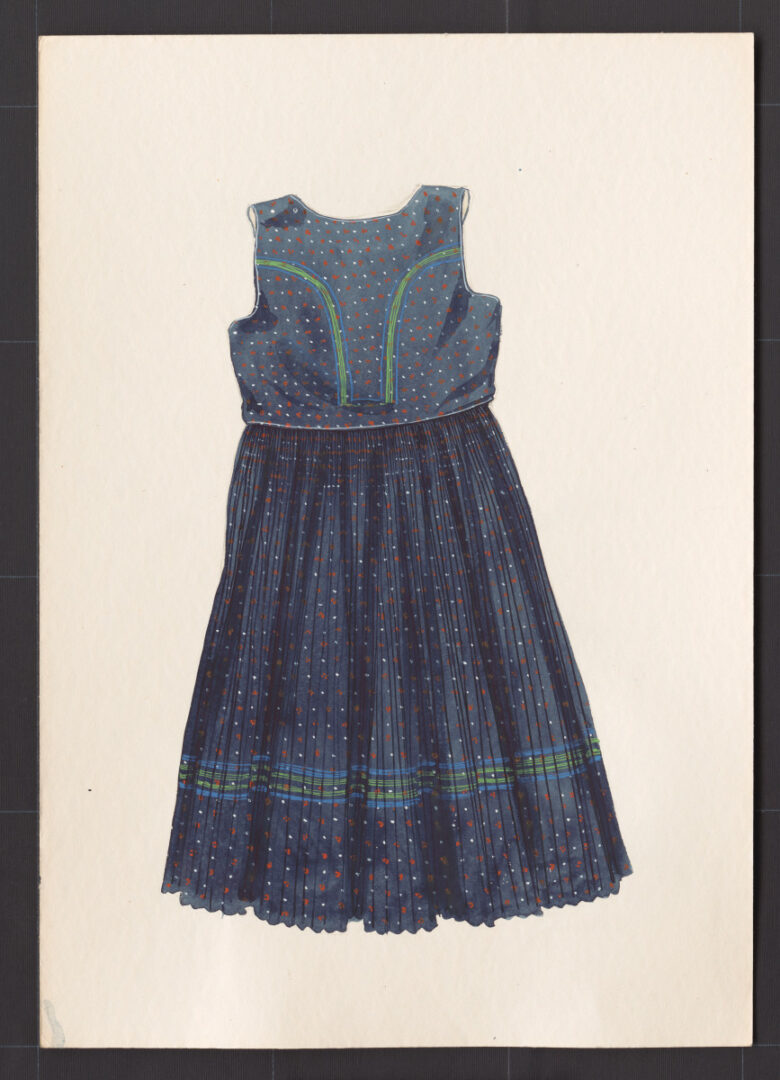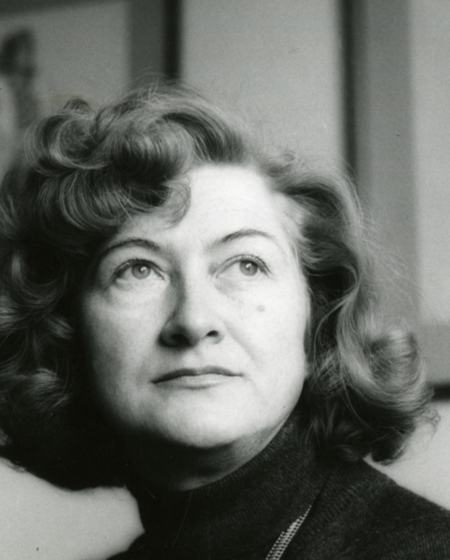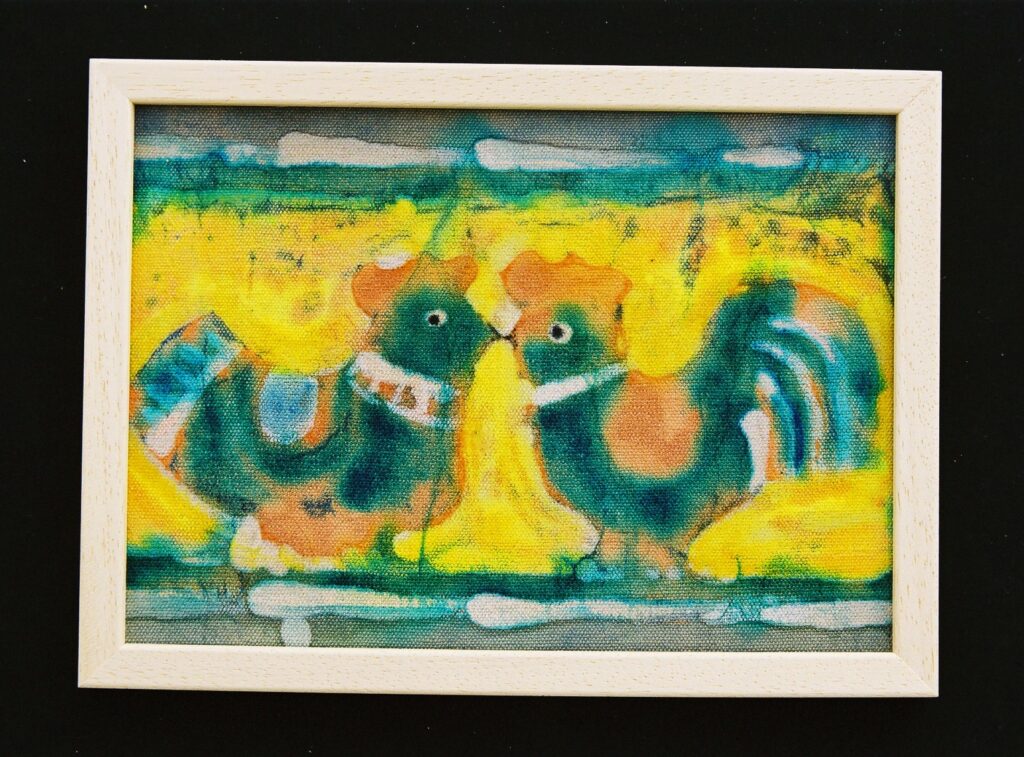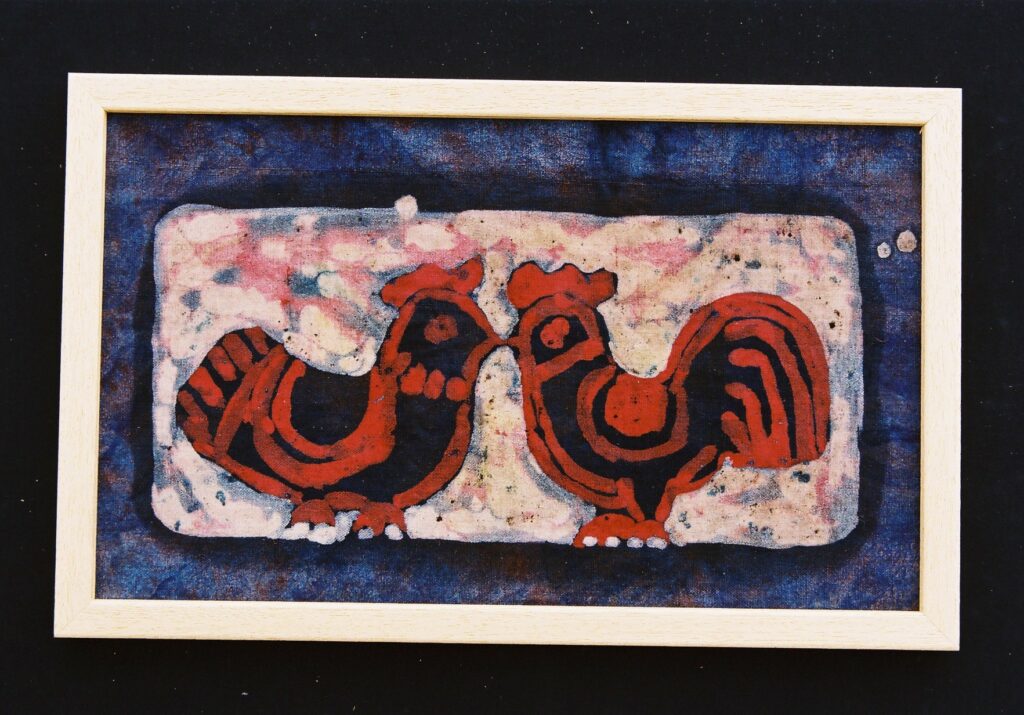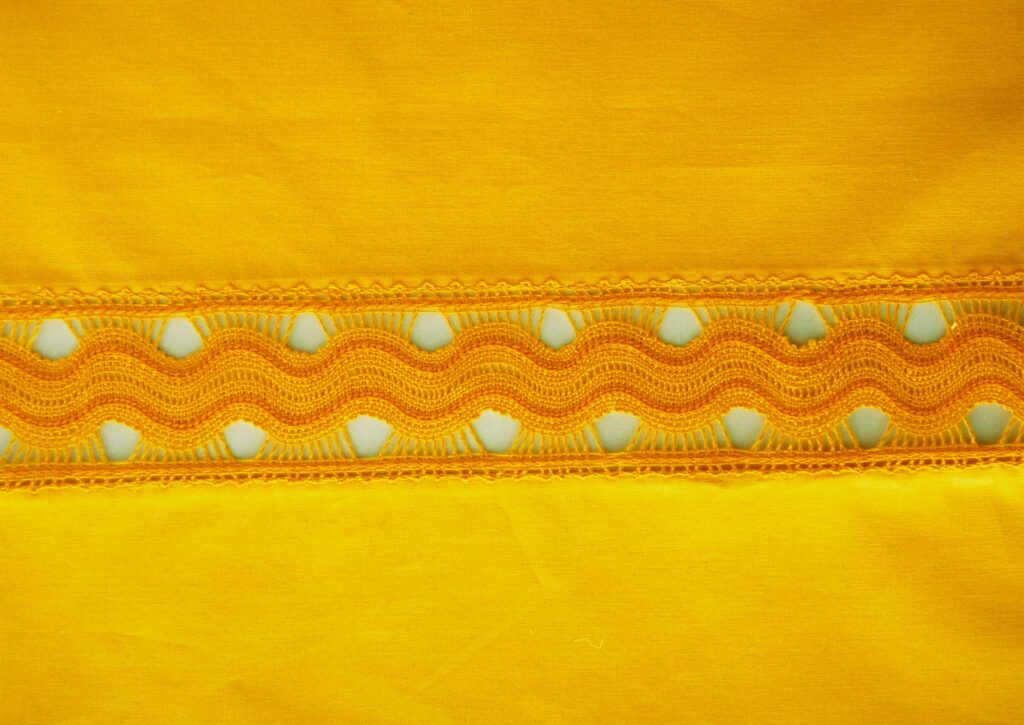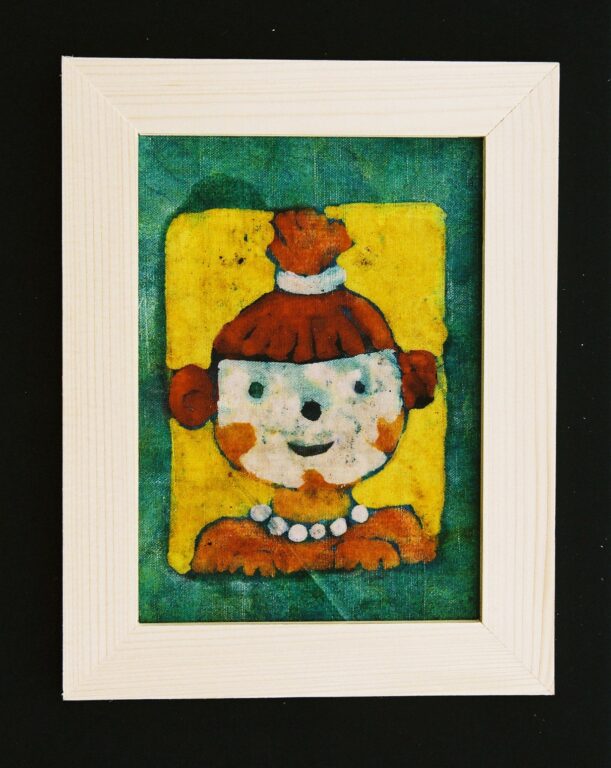Kreba – skirt with a blue printed waistband
Kreba – skirt with a blue printed waistband
Skirt with vest, Horná Súča, second quarter of the 20th century. The skirt (letnica) and vest are made of indigo print. The vest is lined with homemade hemp canvas. The skirt is sewn from seven panels, the front panels with a slit are smooth and the rest are finely pleated along the entire length. The lower edge of the skirt is lined with a wider band of red cardboard. The edges of the vest and the lower edge are decorated with colorful machine stitching. Skirts with vests made of indigo print were worn on both festive and everyday occasions, but the front panels were not tucked into the waist during work. The oldest skirts made of indigo print (Moravian) had a small yellow pattern. At the same time, skirts with an orange-white pattern made of indigo print became popular, which were produced by the indigo workshop in Púchov.
Viera Škrabalová-Líčeníková was a prominent Slovak textile artist with a wide range of creative activities. During her work at ÚĽUV, Viera Škrabalová-Líčeníková also engaged in fashion design. Her fashion sketches incorporate decorative elements of folk costumes, such as embroidery or lace, and are inspired by the design solutions of traditional folk clothing pieces. These drawings document the situation of the 1950s when ÚĽUV closely collaborated with embroidery, lace-making, and blueprint production cooperatives. This collaboration between the cooperatives and design studios resulted in several valuable models that also went into regular production.
The collection of drawings in the Museum of Folk Art Production includes mainly designs for women’s day and evening dresses, as well as blouses. The designs are accompanied by brief descriptions indicating the material, cut, and decoration of the garments. Natural fabrics were proposed for making the dresses – cotton, linen, and silk materials.
In addition to designing and implementing interior decorative and utility textiles, she was actively involved mainly in the spheres of theater, film, and television.
